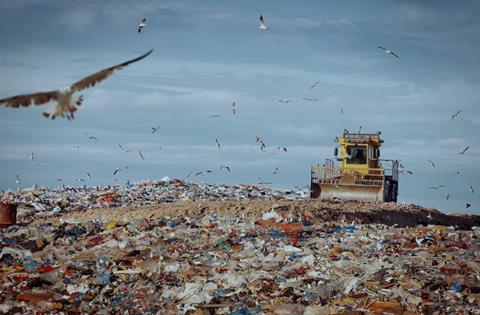Saverio Mayer, CEO Smurfit Kappa Europe, warns that a crucial vote on Packaging and Packaging Waste Regulation could result in more waste, not less
Six years ago, millions of viewers saw a mother albatross feeding her newborn chick scraps of plastic in David Attenborough’s Blue Planet II. What followed was a wave of support for more sustainable packaging and less waste ending up in nature.

Unfortunately, pledges for more sustainable packaging made little difference. According to Eurostat, packaging is still 36 per cent of solid municipal waste and growing. This constant increase combined with low levels of reuse and poor recycling of plastic makes a low-carbon, circular economy a difficult task.
The governing body closest to meaningful change is the European Union. In this, MEPs are representative of their electorate: a study commissioned by Smurfit Kappa revealed that 65 per cent of people surveyed prefer paper packaging over plastic.
To help, the EU is proposing the Packaging and Packaging Waste Regulation (PPWR). It’s a big step in the right direction, and everyone supports its goals of reducing waste and CO2 emissions. Back in 2020, the EU Council already welcomed the intention for all packaging to be reusable or recyclable by 2030.
However, proposals to impose mandatory reuse rules for transport packaging are concerning. As I wrote earlier this year, they would pull the rug out from under the world’s best recycling system and cause the amount of plastic being produced as reusable packaging to double by 2040. A regulation intended to prevent waste could end up including a loophole that causes a mountain of it.
The reality is that only 9 per cent of plastics are currently recycled. The remaining 91 per cent end up in landfills and incinerators or in our rivers, beaches and oceans. Plastic also accounts for 10-13 per cent of the CO2 emissions we need to eradicate by 2050. Encouraging reusable packaging is well intentioned, but we shouldn’t have to scrap recyclable materials: the two should go hand in hand.
The Spanish agri-food sector has also sounded the alarm that reuse doesn’t consider the ongoing increase in CO2 emissions caused by the logistics, transportation and washing systems needed for reusable packaging. And the Spanish Confederation of Business Organisations (CEOE), which represents 2m companies and freelancers from all sectors, has stressed: “the importance of setting realistic objectives based on a sustainability analysis and only when it is demonstrated that they have clear benefits for the environment and society”.
I’m not suggesting plastic packaging should be eliminated. We must be pragmatic. There are and there will be many uses for plastic. But where it can be switched for a sustainable alternative, it should be.
The EU faces some crucial decisions on the PPWR. The first is tomorrow (21 November) when the EU Parliament will have a final vote on it. Then on 18 December, the Council of Environmental Ministers is set to decide its position on the same regulation.
The overriding principle should be this: we should not replace the world’s best recycling system with an unproven reuse-and-return system to justify a product people want to use less rather than more. Theoretically, if we reused all plastic, none would end up in the environment. But this is a myth. Currently, reuse systems consider themselves successful at a return rate of 75 per cent — an equivalent of just four trips from the producer of a packaged good to consumer and back to the producer. This is far away from what the regulation aims for.
There is a clear risk that, well intended as this regulation may be, Europe will end up with huge amounts of oversized, reusable packaging that in practice will make only a few trips and is nonrecyclable according to the same regulation’s definitions.
Reuse-and-return systems are laudable if the material is completely recyclable and ideally biodegradable. This is of paramount importance since a perfectly closed reuse-and-return system will not exist in the foreseeable future. The thousands of different plastics all have a different composition of chemicals that cannot be recycled together. This makes it impossible to process plastic efficiently, while the proposed regulation requires all reusable packaging to be recyclable when it becomes waste.
Fortunately, cardboard packaging is already 100 per cent recyclable and biodegradable. One of its greatest features is that it can be customised to perfectly package just about any product. This saves space and creates important efficiencies in transport while reducing CO2 emissions. At Smurfit Kappa we work daily with our team of over 1,000 designers to develop bespoke packaging that is fit-for-purpose for our 70,000 customers. We don’t have to reinvent the wheel. Sustainable packaging, 100 per cent renewable, recyclable and biodegradable already exists.
Like so many important moments in history, the upcoming vote in the European Parliament and the Council’s decision come down to politicians doing their best to choose between two possible futures. One, where plastic production continues to rule and grow. Or the second, better option, where cardboard packaging with its, by far superior, existing, and proven recycling system across Europe becomes a cornerstone of EU policies for a truly circular economy.
Will our political leaders commit to a green and circular Europe? Or will they continue to favour fossil-based materials that will further enlarge Europe’s existing mountain of plastic packaging waste?



